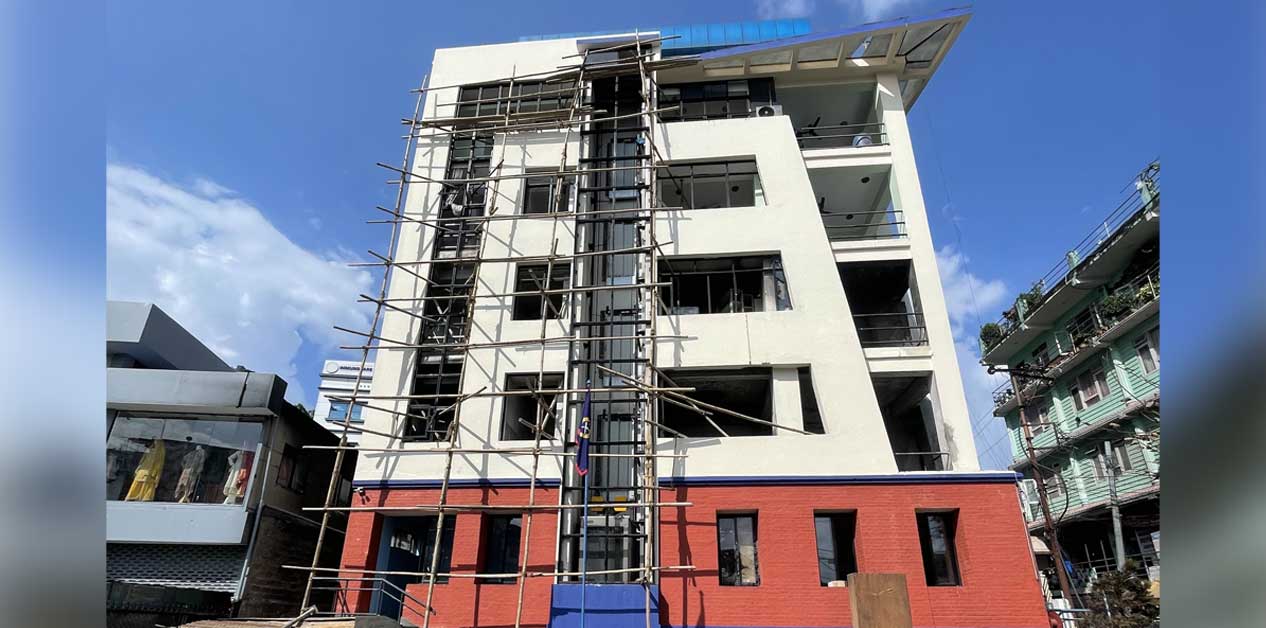

KATHMANDU: On September 9, during the Gen Z movement, the Maharajgunj Police Circle in Kathmandu was not only set on fire but also saw the deaths of Assistant Sub-Inspector Milan Rai and Police Constable Uttam Thapa.
Hostage policemen had to be rescued by an army helicopter. From September 10, as the situation calmed, a new wave of political change began in the country.
On September 12, with the formation of a civilian government under Sushila Karki, the Maharajgunj local community began to mobilize. Within two weeks of the incident, repairs of the Maharajgunj Police Circle have now reached the final stage.
Painting, construction of windows and doors are ongoing simultaneously. Most of the required materials such as computers, tables, chairs, internet, fans, air conditioners, and water tanks have already been managed. The first to step forward in this reconstruction effort were the injured ex-police community themselves.
With the involvement of former Inspector General of Police Dhruba Bahadur Pradhan, former Additional Inspector General Surendra Bahadur Shah, and former Senior Superintendent of Police Basanta Raj Kunwar, all-round support for reconstruction started to gather.
According to former IGP Pradhan, after the Gen Z protests, the Police Headquarters had appealed for support, even citing a lack of uniforms.
“We ex-policemen in the community decided to see what we could do,” he said. “Then we coordinated with local clubs and organizations and decided to rebuild the Police Circle.”
After that, neighborhood groups such as Milijuli Tol of Maharajgunj and Bansbari Club took the lead in reconstruction.
Some donated cement, some sand, others chairs or tables — everyone provided whatever they could to the police office. This effort is still ongoing.
Former police personnel living abroad also collected money and sent it for the rebuilding, Pradhan said.
“Since the police were left without an office after the fire, we first thought about how to boost their morale by reestablishing their workplace. Everyone contributed in their own way,” said Pradhan, who is also a guardian of Milijuli Tol.
Thanks to all-round support, the police office will be fully ready within a week, according to Kathmandu District Police spokesperson SP Pawan Kumar Bhattarai.
“There was no detention cell, no officer’s room, but now most rooms are occupied by police. The barracks are also being built,” he said.
Nepal Police Information Officer SSP Gopal Chandra Bhattarai said the annual police budget had already been mobilized in July.
Like Maharajgunj, arson during the protests destroyed police structures across Kathmandu, but with community cooperation, offices are gradually being rebuilt.
Without any government budget, spontaneous contributions from the people are lifting the police out of an office-less state and reestablishing them.
This has proven that in times of crisis, the community itself becomes the support system for security institutions.
According to SSP Shekhar Khanal, spokesperson of Kathmandu Valley Police Office Ranipokhari, a total of 219 offices in Kathmandu, Bhaktapur, and Lalitpur were either fully or partially damaged.
Among them, 101 offices have resumed daily duty. “Whatever condition the offices are in, police have resumed duty after cleaning them,” Khanal said.
According to Khanal, repairs have started in 104 police offices. “In all offices, local communities are active in the repairs,” he said. “Community support has greatly helped return police to their offices in this emergency,” he added.
Fourteen police units, including traffic, still uninhabitable The building of New Baneshwor Police Circle is also uninhabitable. Police there are currently working from the Citizen Investment Fund building.
The Valley Traffic Police Office also needs reconstruction. Kathmandu Valley Police Office, currently based in the Police Club, is itself waiting for reconstruction.
“In smaller offices under our command, communities are spontaneously helping with reconstruction,” said Valley Traffic Police Chief SSP Nabaraj Adhikari.
The burnt-down Janasewa Circle is operating from the Newa: Cultural Building. Gaushala Police is working out of Pashupati’s Dharamshala. The buildings of Balaju, Bouddha, Swayambhu, New Bus Park, Thimi, Jagati, and Chapagaun police circles are all unusable.
The offices of Katunje, Changunarayan, and Badegaon police units are also uninhabitable. “Police are working from nearby offices or ward offices,” Khanal said.
According to Nepal Police Information Officer SSP Gopal Chandra Bhattarai, the annual police budget had already been mobilized in July. Since sudden reconstruction needs have now emerged, the challenge is how to arrange the budget.
“There could be a reallocation of funds, and the Home Ministry might be planning a reconstruction program, but that requires ministerial-level decision,” Bhattarai said.
“Since communities are keenly supporting the construction of police buildings, it has given great relief to the police for reestablishment.”